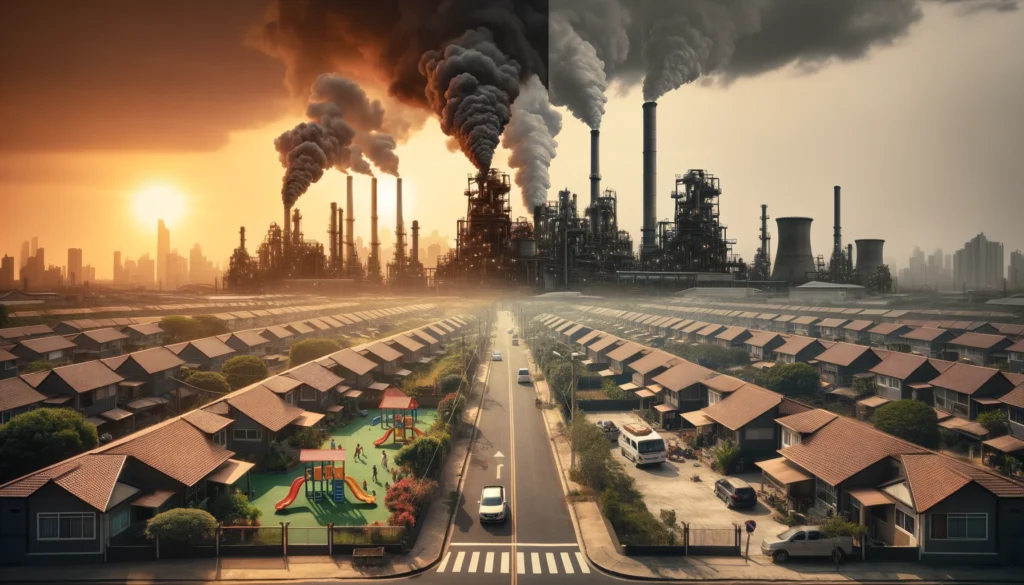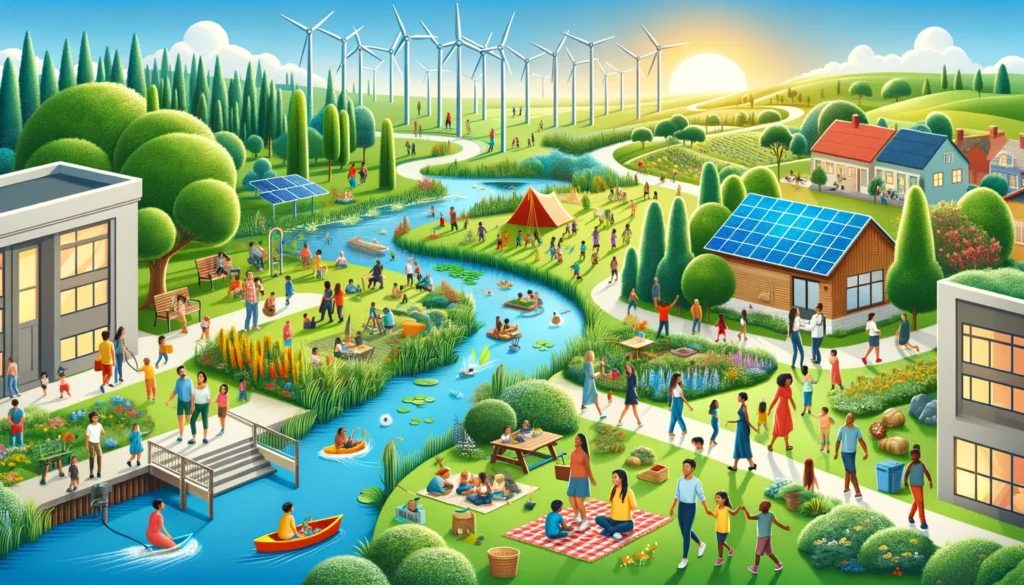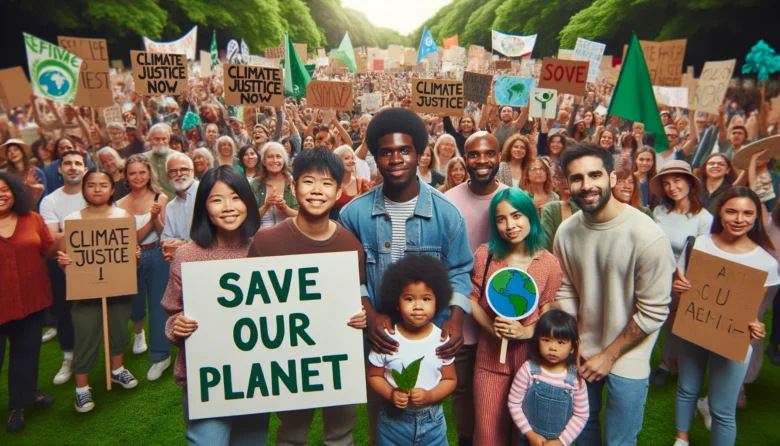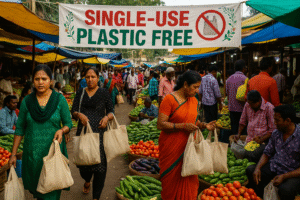Part III: “The Fight for Fairness: Unpacking Environmental Justice”
Welcome to the third installment of our enlightening series on “Ethics in Environmental Activism.” This blog delves into the concept of Environmental Justice (EJ), a pivotal aspect of the environmental movement that seeks to ensure equitable access to clean, healthy, and sustainable environments for all communities, regardless of their socio-economic background.
In this exploration, we uncover the roots of EJ, highlight the key issues it addresses, and discuss the strategies and actions essential for achieving justice in environmental policies and practices. Our journey will take us through the challenges of pollution burden, resource allocation, climate injustice, economic inequities, and the cultural impacts on various communities, providing insights into the global and local scales of environmental fairness.
Join us as we navigate the complex landscape of Environmental Justice, understanding its significance in creating a balanced and equitable world where every individual has the right to a safe and healthy environment.
The Essence of Environmental Justice
Environmental Justice (EJ) is fundamentally about fairness and the right to a healthy environment for all people, regardless of their race, income, or social status. It’s a movement and a mindset that challenges the historical patterns of environmental inequality and seeks to rectify the injustices that disproportionately affect vulnerable and marginalized communities.

- Equality and Protection: At its core, EJ advocates for equal environmental protection for all communities. It emphasizes the need to prevent situations where low-income or minority communities face greater environmental risks and health hazards than more affluent or majority populations.
- Empowerment and Participation: EJ is also about empowering communities to have a say in the environmental decisions that affect them. It promotes active participation in the political process, ensuring that all voices are heard, especially those that have been historically silenced or overlooked.
- Holistic Approach: EJ takes a comprehensive view of the environment, recognizing that it includes where people live, work, play, and learn. It connects the health of the environment with the health of individuals and communities, advocating for policies and practices that enhance both.
- Global and Local Perspectives: While EJ has local roots, addressing specific community needs, it also encompasses global concerns. It acknowledges that environmental issues cross borders and that actions in one part of the world can have significant impacts on distant communities.
- Sustainable Future: Ultimately, EJ is about securing a sustainable future where environmental health, human dignity, and economic opportunity are available to everyone. It strives for a world where development does not come at the expense of the environment or vulnerable populations.
The essence of Environmental Justice lies in its pursuit of a balanced and fair relationship between humans and the environment, ensuring that everyone has the opportunity to live in a safe, healthy, and nurturing world.
Key Issues in Environmental Justice
Environmental Justice (EJ) tackles various issues that affect the quality of life and environment of communities, especially those historically marginalized or underserved. Understanding these issues is crucial for creating fair and sustainable solutions.

- Pollution Burden: EJ addresses the unequal exposure to pollutants faced by certain communities, often based on race, income, or geography. This includes proximity to toxic waste facilities, landfills, or heavy industrial areas that contribute to health problems like asthma or cancer.
- Resource Allocation: The fair distribution of natural resources, such as clean water, air, and green spaces, is a significant concern. EJ seeks to ensure that all communities have equal access to these vital resources, regardless of their economic status or location.
- Climate Injustice: Some communities bear the brunt of climate change effects more heavily, including increased risks from heatwaves, flooding, and other extreme weather events. EJ strives to address these disparities, ensuring that vulnerable populations receive adequate protection and support.
- Economic Inequities: Economic factors often intersect with environmental issues, where poorer communities may lack the means to combat pollution or invest in cleaner alternatives. EJ aims to balance economic growth with environmental protection, advocating for sustainable development that benefits all sectors of society.
- Cultural Impact: EJ also recognizes the cultural and spiritual significance of the environment for many communities. Protecting lands and resources that hold cultural, historical, or spiritual importance is essential for maintaining the identity and heritage of these groups.
By focusing on these key issues, Environmental Justice seeks to create a world where everyone has the right to a clean and healthy environment, leading to stronger, more resilient communities.
Achieving Environmental Justice
Creating a fair and just environment involves several key actions and commitments:
- Policy and Regulation: Governments play a big role in EJ by making and enforcing laws that prevent pollution and protect natural resources. This includes setting stricter pollution controls and ensuring that industrial developments do not disproportionately impact vulnerable communities.

- Community Empowerment: Local communities must have a voice in the decisions that affect their environment. This means involving community members in planning and decision-making processes and ensuring they have access to necessary information and resources to advocate for their rights.
- Fair Access to Resources: Ensuring that all communities have equal access to natural resources, such as clean water and green spaces, is essential. This also involves improving infrastructure like sewage systems and roads in underserved areas.
- Addressing Climate Change: EJ seeks to tackle the unequal effects of climate change, ensuring that those who are most vulnerable receive support and protection against climate-related disasters and impacts.
- Sustainable Development: Encouraging practices that lead to long-term environmental health and prosperity, ensuring that economic growth does not come at the expense of environmental quality.
Achieving environmental justice requires a concerted effort from individuals, communities, businesses, and governments to create a fairer, more sustainable world for everyone.

Author’s Note
Thank you for diving into the important world of environmental justice with us. Understanding and addressing these issues is crucial for building a fairer and more sustainable world for everyone. Let’s continue to learn, share, and act for justice in every breath of air and sip of water we take.
G.C., Ecosociosphere contributor.
References and Further Reading
- “Toxic Communities: Environmental Racism, Industrial Pollution, and Residential Mobility” by Dorceta Taylor – Explores the impact of industrial pollution on communities and the concept of environmental racism.
- “Environmental Justice: Concepts, Evidence and Politics” by Gordon Walker – Provides an overview of environmental justice issues, evidence, and the political landscape.
- “Sacrifice Zones: The Front Lines of Toxic Chemical Exposure in the United States” by Steve Lerner – Investigates the areas and communities in the U.S. most affected by toxic chemical exposure.





Comments
Thank you for your sharing. I am worried that I lack creative ideas. It is your article that makes me full of hope. Thank you. But, I have a question, can you help me?
Your article helped me a lot, is there any more related content? Thanks!
Can you be more specific about the content of your article? After reading it, I still have some doubts. Hope you can help me.
I don’t think the title of your article matches the content lol. Just kidding, mainly because I had some doubts after reading the article.
Thanks for sharing. I read many of your blog posts, cool, your blog is very good.
Your point of view caught my eye and was very interesting. Thanks. I have a question for you.
I don’t think the title of your article matches the content lol. Just kidding, mainly because I had some doubts after reading the article.